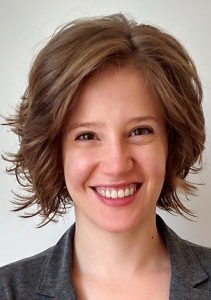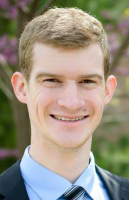VISE Summer Seminar: Megan Poorman and Patrick Anderson
VISE Research in Progress (RiP)
Summer Instructional Seminar Series
Date: Thursday, August 10, 2017
Location: Stevenson Center 5326
Time: 12:10 p.m. start, Noon lunch to be delivered by

Megan Poorman, doctoral candidate, biomedical engineering
RiP Title: Orientation-independent Z-shimmed MR thermometry near ablation probes
RiP Abstract: MR guidance of thermal ablation is hindered by signal loss around the metallic applicators and needles used to deliver treatment. This signal loss can prevent accurate MR thermometry in the area of critical heating around the ablation probe. Here I present a multiple-echo z shimmed sequence with optimized refocusing scheme that can correct for through-plane distortion from the probe irrespective of probe and slice orientations. With the chosen refocusing scheme, an improved signal recovery of 10 to 1 in the near-probe region was achieved when compared to a conventional gradient echo thermometry technique.
Rip Short Bio: Megan Poorman graduated from Texas A&M University in 2014 and is currently a VISE NIH T32 Fellowship Trainee and PhD Candidate in Biomedical Engineering at Vanderbilt University. She is a member of the Vanderbilt University Institute of Imaging Science and works with Dr. Will Grissom to develop improved MR thermometry techniques for guidance of minimally invasive surgical procedures.
and

Patrick Anderson, doctoral candidate, mechanical engineering
RiP Title: Continuum, Reconfigurable, Parallel Robots: A New Approach to Minimally-Invasive Surgery
RiP Abstract: My talk will introduce a new class of robotic device for minimally invasive surgery that lies at the intersection of continuum, parallel, and reconfigurable robotics. It is designed to enable incisionless access to the pleural cavity after a lung is partially deflated, while giving surgeons the ability to dexterously maneuver tools for inspection, biopsy, and treatment. This is accomplished with a new way of using needles inside the body: multiple thin, flexible needles are inserted into the pleural space and connected to each other to create a flexible structure. The parallel structure formed by the needles can be maneuvered inside the body via coordinated motion of the needles’ bases outside the body using robot manipulators. In my talk, I will discuss methods for modeling, designing, and sensing this new type of surgical robot.
RiP Short Bio: Patrick Anderson is pursuing his PhD in the Medical Engineering and Discovery (MED) Lab, which is run by Dr. Robert Webster. He is interested in continuum robots and medical devices for surgery. He received his B.S. degree in mechanical engineering from Calvin College in Grand Rapids, MI in 2015. At Vanderbilt, he has participated in the NIH/NIBIB T32 Training Program for Innovative Engineering Research in Surgery and Intervention. He received the NSF Graduate Research Fellowship in 2017.

